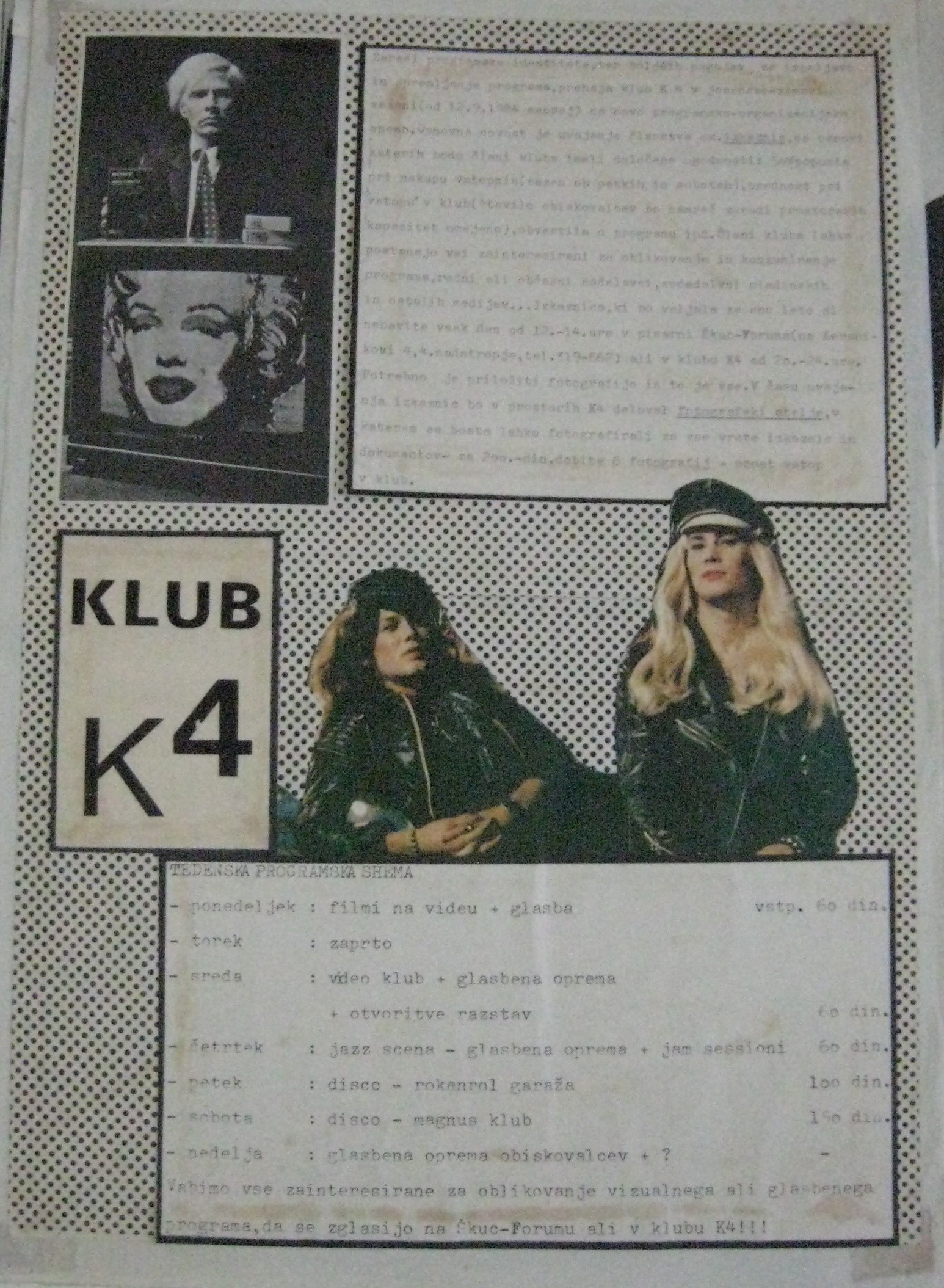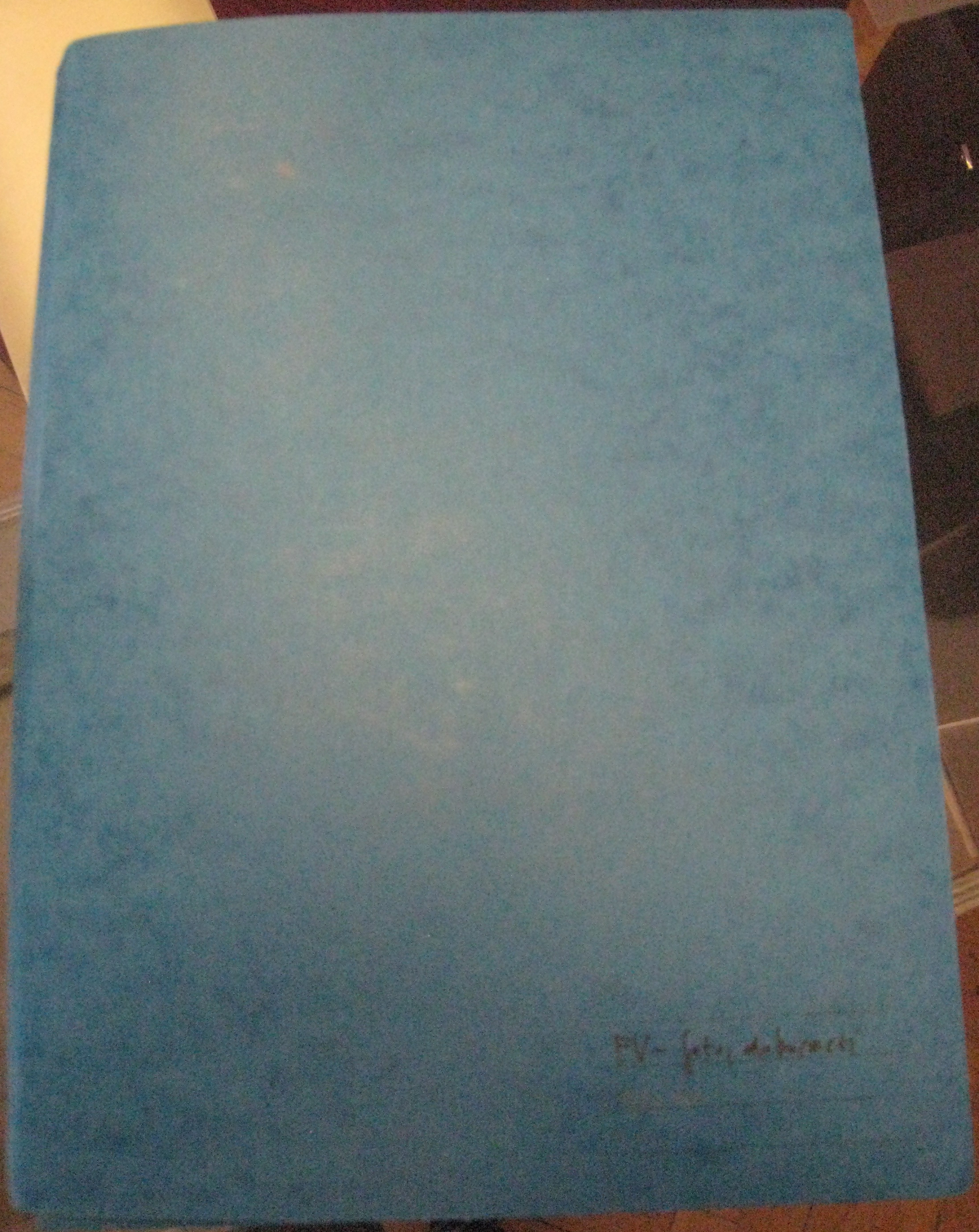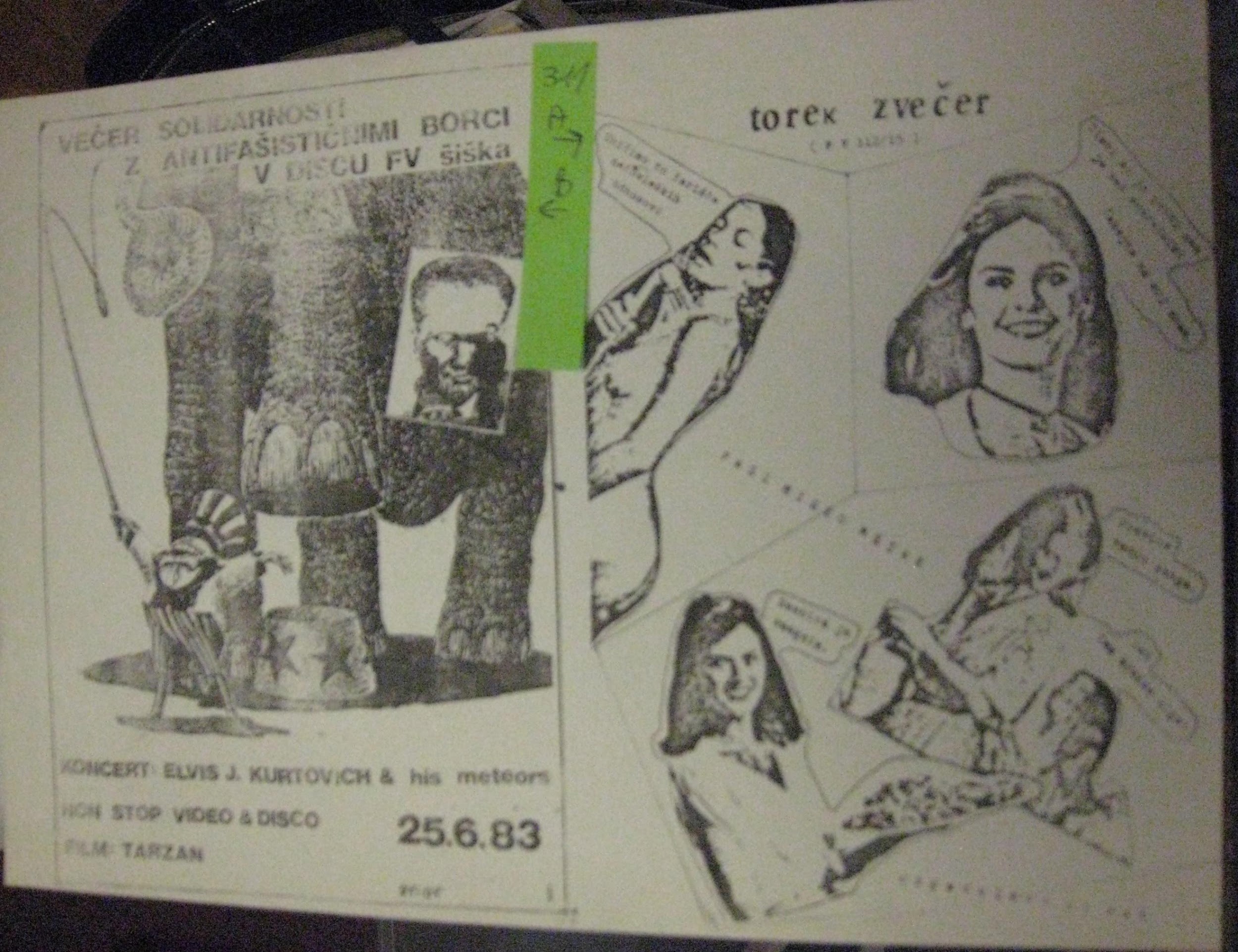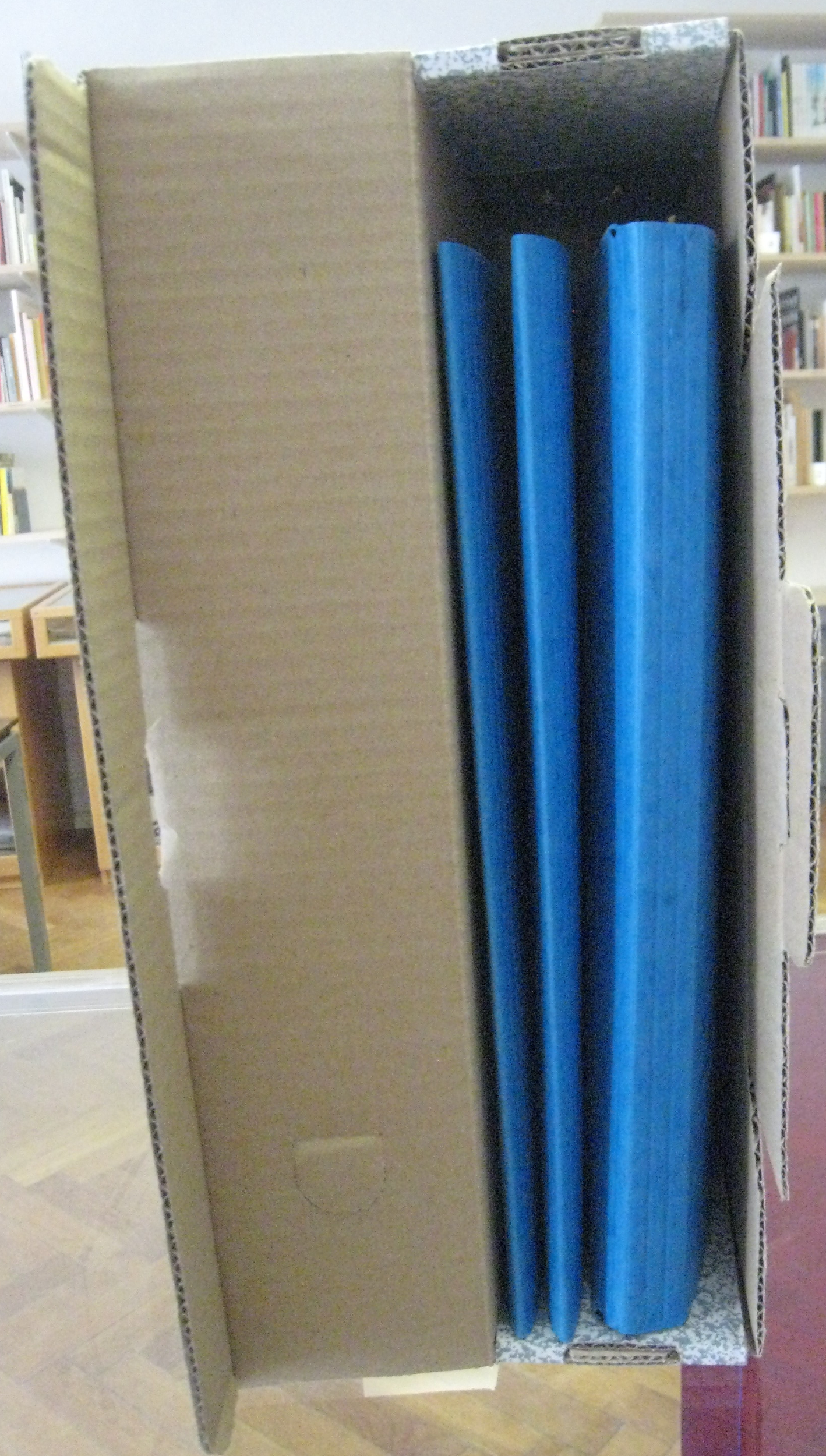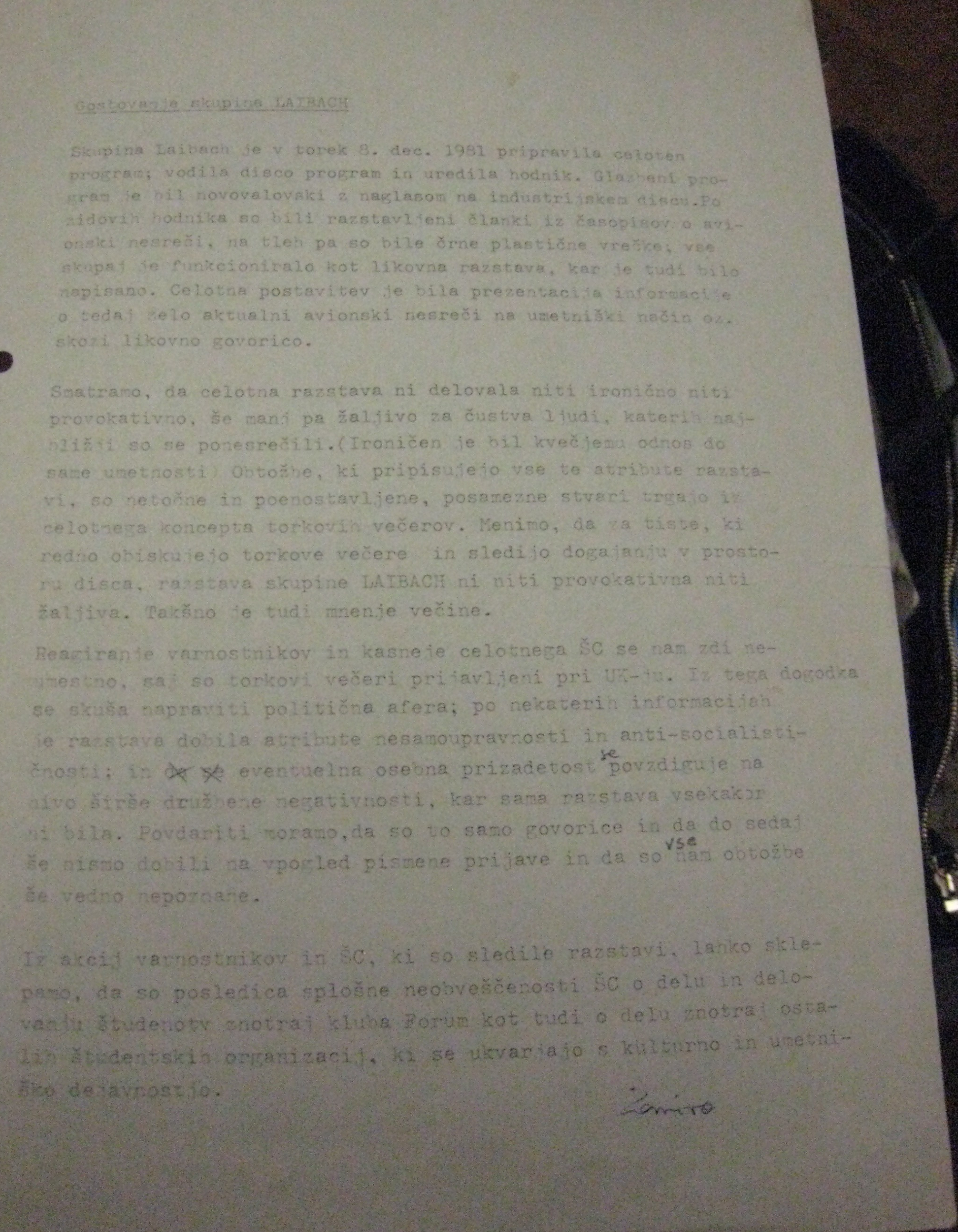The archives of the FV 112/15 group do not exist as an original collection; rather they are only one component of the International Centre of Graphic Arts’ (ICGA) single Collection. This is why an ad hoc collection, called the FV 112/15 Group Collection, had to be created, containing the relevant materials for the culture of dissent in socialism. The name of this ad hoc collection – the FV 112/15 Group Collection – is an abbreviation for France Verbinc, Slovar tujk (A Dictionary of Foreign Words), page 112, headword 15: “C’est la guerre.”
Neven Korda, the collector and founder of the archives of the FV 112/15 (theatre) group collected/stored all of the materials related to this group’s activities both spontaneously and intentionally, that is, to serve the needs of the FV video. FV 112/15 was first active as the FV 112/15 Theatre (1980–1983). In 1981, its members began to run events in three clubs: Disco Študent/Disco FV (1981–1983), Šiška Youth Centre (1983–1984), Kersnikova 4 (K4) (1984–). Finally, in 1983 the band Borghesia was established. Already in 1982 the FV Video – the FV 112/15 Theatre’s video work – was an extension of the group’s photo sessions and their fascination with lighting, costuming and posing in front of the camera. In 1985, the FV založba (FV Publishing Company) was established as an independent label for alternative music (it functioned until 1994).
The group FV and certain other groups are the primary creators of the collection’s content. The FV group’s activities, as already mentioned, ranged from theatre to clubs, from music production to video production and publishing activities. The group performed in urban clubs and thus transcended the limits of a standard theatre regarding its topography, concerns, aesthetics, and target audience. Their performances were rooted in the principles of collective authorship and collage. People who worked in clubs were also involved in FV activities. First, an idea would emerge, which was then implemented with the maximum input of all those who were interested in it.
Members of the FV group were also members and leaders of the band Borghesia. Aldo Ivančič and Dario Seraval initially formed the band Borghesia (1982–1989) and were joined by Zemira Alajbegović, Neven Korda and Goran Devide in 1983. Group FV/FV Video was responsible for videos and concert footage of a few other groups (Videosex, Miladojka Youneed, Niet, Čaopičke, Tožibabe, Azra, Demolition Group...). The FV 112/15 group was deeply involved with the development of Slovene video art and the beginnings of certain progressive trends in music, as expressed by groups such as Borghesia, Videosex and Laibach, among others.
Artistic and documentary photograph (photographs), posters, flyers, text, invitations, promotional materials and all manner of documents, from letters to meeting minutes, in other words, the FV 112/15 group’s papers, are thus components of the International Centre of Graphic Arts’ (ICGA) Collection. Curator Breda Škrjanec told the story of how this material arrived there. When, in 2005, the ICGA was staging the exhibition called the "First Line" – a show that presented printed art ephemera in Slovenia from the mid-1960s to the first years of the twenty-first century – Neven Korda, a former member of the FV group, was asked to loan his archival materials to the ICGA. Since these materials had grown exponentially over the time, the idea emerged to deposit them with the ICGA. And then Neven Korda decided to donate them in 2006.
Source: Interview with Breda Škrjanec, ICGA. August 2016.
As for the rest of material from Neven Korda’s archives, that is, art, music, and documentary video projects from the 1980s, they are partly available online at the digital video archive DIVA Station in Ljubljana (see especially Neven Korda), where they are physically and digitally stored. The archives of the FV založba – cassettes, LPs, singles and VHS cassettes – are partly (VHS cassettes) deposited, according to him, at Forum Ljubljana (an independent production company established in 1994 as an institute for artistic and cultural production. It is a successor to the first civilian association ŠKD Forum, established in former Yugoslavia at the end of the 1960s); partly at FV Records (LPs and audio cassettes)-also a successor of the first civilian association ŠKD Forum and partly are stored at Neven Korda’s on-line personal web archives, called Zanka. Its subject headings Subculture/Alter practice and Borghesia, including some of Documentaries/Television, are directly connected to the FV 112/15 Group Collection deposited at the ICGA. The material is structured and equipped with colophons. There are also accessible video works and scans of different publications. Neven Korda maintains originals of all video works published on this site.
Next to this online personal web archive, Neven Korda also holds a personal video archive (VHS cassettes, Umatic-L cassettes, and Video 8 cassettes), which also exists in digital form. There are certain technical units in Korda’s personal archive: an Atari 1040 computer and floppy disks. Pictures/graphics are stored on the floppy disks. Animation programs and programs for generating intermediate stages in the development of animations, created by Goran Devide, are also stored on floppy disks. Korda focuses special attention on this segment of his personal archive. As to the audio component of the archive, cassettes and LPs are stored at Radio-Television of Slovenia (RTV SLO). Technical devices have since been lost.
Physical and digital video archives constitute an important and precious part of the cultural heritage. In the 1980s, video was used as a powerful form of social and media expression, which increasingly became the primary media tool of the underground scene and television. As Neven Korda says, the FV 112/15 group’s archives were collected to serve the needs of FV video. Archival materials were continuously used in production, e. g. in the form of slides or as a visual background for venues (clubs, stages). Video production was thus an integral part of the archives. In the 1980s, as a member of FV 112/15, Neven was responsible for the FV video program. He recorded photographs, posters, and visualisations on paper for various artistic and informative projects from different years and in various combinations.
The archival materials about the FV 112/15 group played an active role not only in the 1980s, at the time of the active FV video program, but also in the 1990s, when it was used to produce several documentary films. Between 1992 and 1993, Neven Korda and Zemira Alajbegović jointly prepared several documentary television programs, called Podoba (Image) 1-5, for the television station Kanal A. In 1997, they completed the documentary film Staro in novo (Old and New); in 1994, a retrospective exhibition about the FV conglomerate was organised in the ŠKUC Gallery, entitled "FV-10 Years Later".
The essence of these archives was and remains to preserve the originals (as with video tapes). The sole purpose of collecting materials about the FV group was functional, that is, for video production. There was no intention to create an archive. There was no selection criteria of any type. Since Neven recognised the materials as important sources of information, he archived them all.
Source: Interview with Neven Korda. January 2017.
